What produce should you buy in February?
The holidays are over and we are well into the dark dreary days of winter. Sadly there are just thirteen items in season this month. What is in season in February? Produce peaks at different times throughout the US so there will be some variances. But here is a general guide.
To make it easier for you to plan your meals and make a grocery list, I have created produce guides for every month letting you know what is in season along with a few recipe suggestions.
Why buy fruits and vegetables when they are in season?
Cost: Produce prices are subject to supply and demand. When produce is in abundance because it is in season the prices go down.
Eco-Friendly: In-season produce is more likely to be grown locally meaning it doesn’t have to travel as far to get to you reducing its carbon footprint. Stop by your local farmers market to purchase some of the freshest produce available.
Taste: In-season produce is fresher and tastes better. It is grown during its optimal conditions and because it can be grown more locally it usually has a chance to fully ripen before it is picked
Nutrition: Fully ripened produce is more nutritious because it has had time to fully develop before being picked.
What’s in season in February?
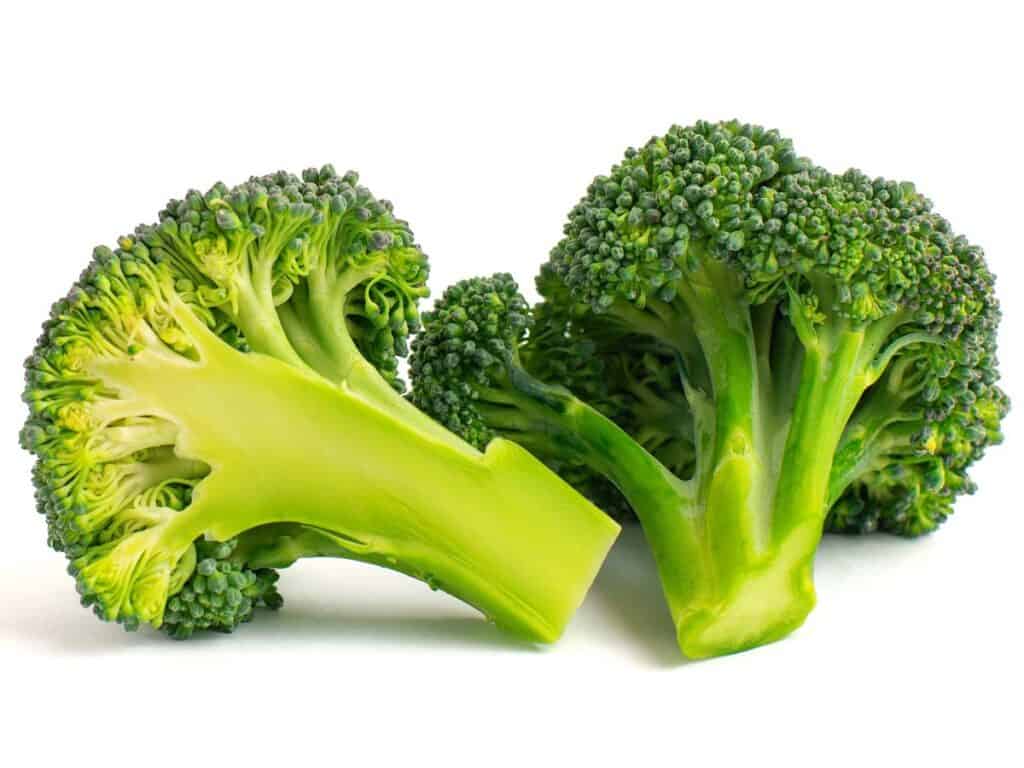
Broccoli
Broccoli is part of the cabbage family and is a good source of vitamin C and vitamin K.
Buying
Choose broccoli that has closed florets and deep green color. Avoid broccoli with yellowing or that is soft.
Storing
Refrigerated broccoli will keep for up to five days. Broccoli should be loosely wrapped in plastic or a dishtowel.
Preparing
Wash and then cut into appropriately sized pieces. All but the very end of the stock can be used.
Recipes
Cheesy Broccoli Bites - Kathryn's Kitchen Blog
Instant Pot Broccoli and Rice Casserole - Sweet Pea's Kitchen
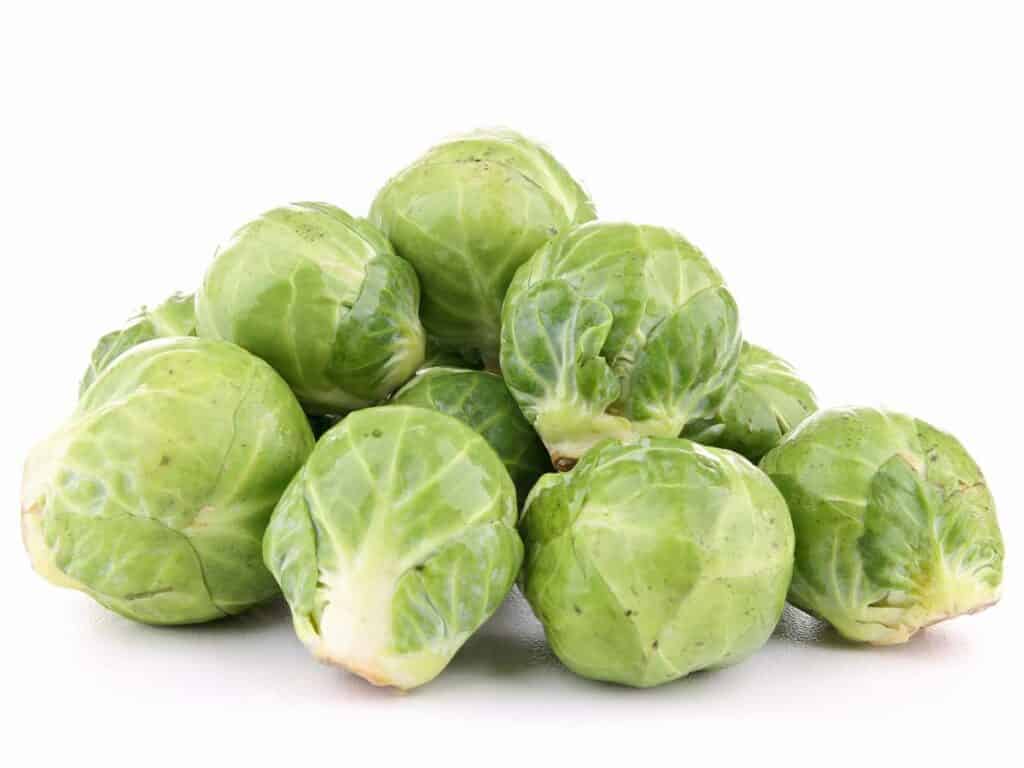
Brussel Sprouts
Brussels sprouts are delicious and can be boiled, steamed, sauteed, grilled, roasted, and even fried. They are even great when served raw and shredded into a slaw. They are part of the cabbage family and are most commonly green but there are a few varieties that are purple in color. They are high in vitamin C and vitamin K.
Buying
If possible choose brussels sprouts that are still on the stalk. Look for brussels sprouts with bright, firm, and compact heads. Avoid sprouts with pinholes, which can be a sign of insect damage.
Storing
Brussels sprouts can be refrigerated in a plastic bag for up to a week.
Preparing
Remove brussels sprouts from the stalk and cut off the stem. You can also remove any of the loose outer leaves.
Recipes
Bacon Pecan Sauteed Brussel Sprouts - Sweet Pea's Kitchen
Air Fryer Sweet and Spicy Brussels Sprouts - Everyday Family Cooking
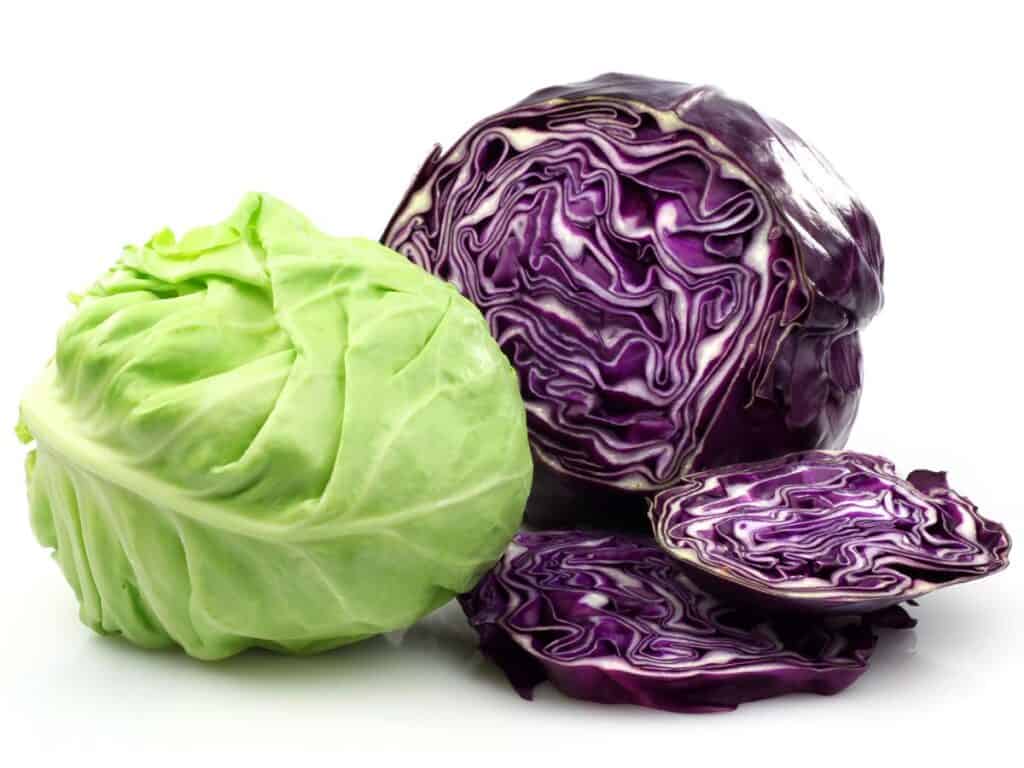
Cabbage
Cabbage can be dark green, purple, white, or light green. Cabbage is a great source of vitamin K, vitamin C, and fiber.
Buying
Look for cabbage that is compact with blemish-free leaves. Avoid cabbages that are light for their size.
Storing
Cabbage can be refrigerated for up to seven days. Once cut cabbage should be stored in an airtight container.
Preparing
Remove the outer leaves and then slice them into pieces. Wash under running water and remove the core.
Recipes
Cabbage Salad with Apples and Walnuts - The Clever Meal
Cream of Turkey Soup with Cabbage and Kale - Low Carb Yum
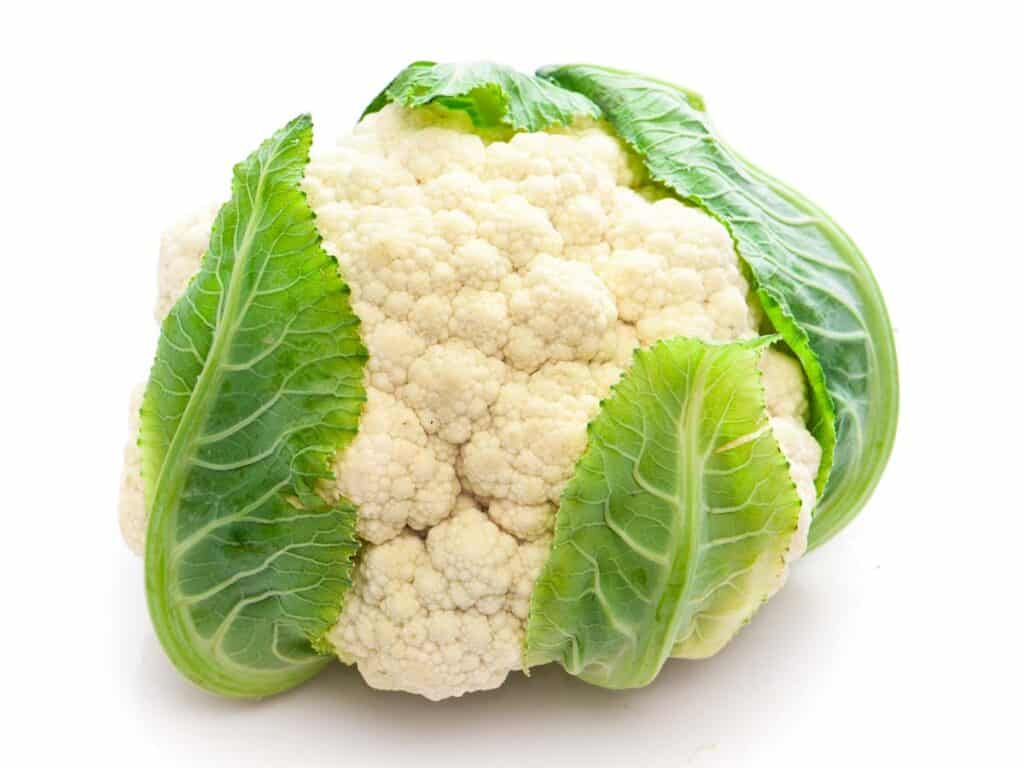
Cauliflower
Cauliflower is super popular right now. Masquerading as a pizza crust, mashed potatoes, and rice. Cauliflower comes in several varieties including white, orange, green, and purple. Cauliflower can be roasted, grilled, boiled, fried, steamed, pickled, or eaten raw. It is high in vitamin C and vitamin K.
Buying
Look for cauliflower that is compact with firmly attached bright green leaves. Avoid cauliflower with brown spots or spread-out sections.
Storing
Cauliflower can be refrigerated for up to five days.
Preparing
Wash cauliflower just before use. Remove the outer leaves, stem, and core. Then break or cut it into smaller pieces. Reusable Block
Recipes
Roasted Cauliflower Leek Potato Soup
Grilled Ginger Cauliflower Steaks With Tahini Sauce - Strength & Sunshine
Vegan Instant Pot Cauliflower Soup - Piping Pot Curry
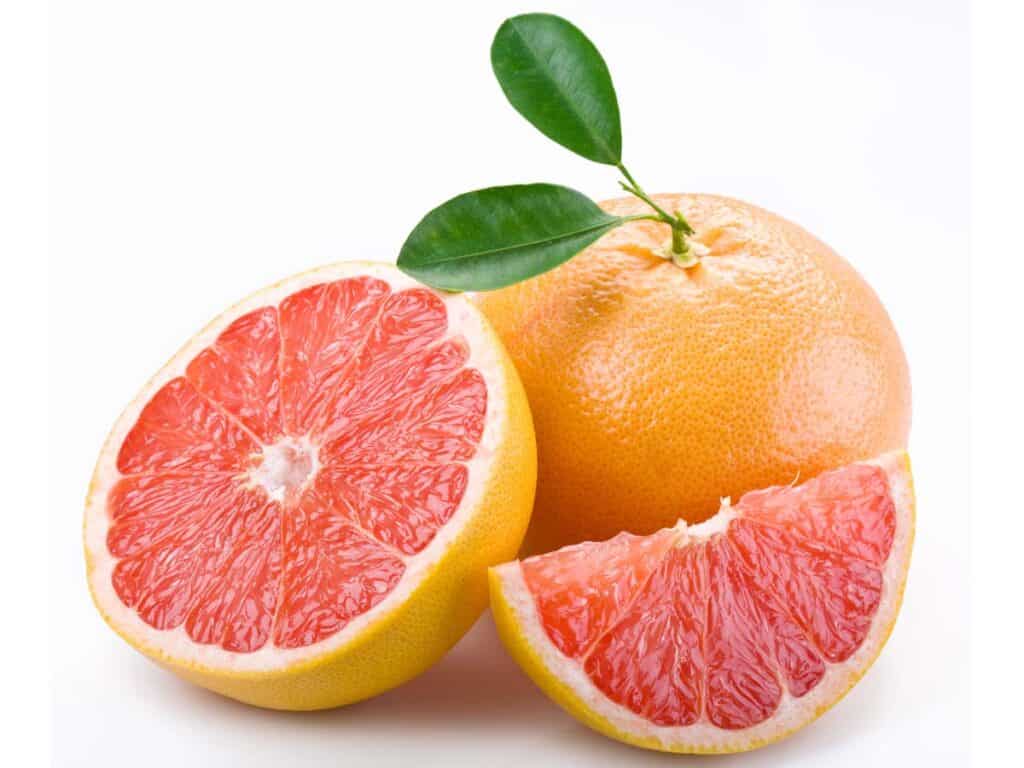
Grapefruit
Grapefruit is a citrus fruit known for its sour to semi-sweet flavor. Grapefruit can have red, white or pink flesh. Grapefruit is high in vitamin C and fiber.
Buying
Grapefruits should have skin that is thin, smooth, firm, and blemish-free. Grapefruits should also be heavy for their size.
Storing
Grapefruits can be stored at room temperature for up to a week or in the refrigerator for two to three weeks.
Preparing
Grapefruits can be peeled and sectioned by hand. Using a knife you can also prepare skinless grapefruit segments. With a sharp knife, cut off the top and the bottom of the grapefruit and cut away the remaining peel and white pith. Next, either slice the fruit or cut along either side of each segment to release it. If you need the zest, grate it before peeling the fruit.
Recipes
Grapefruit Mimosa with Rosemary - Everyday Delicious
Blueberry Grapefruit Smoothie - Moms Who Save
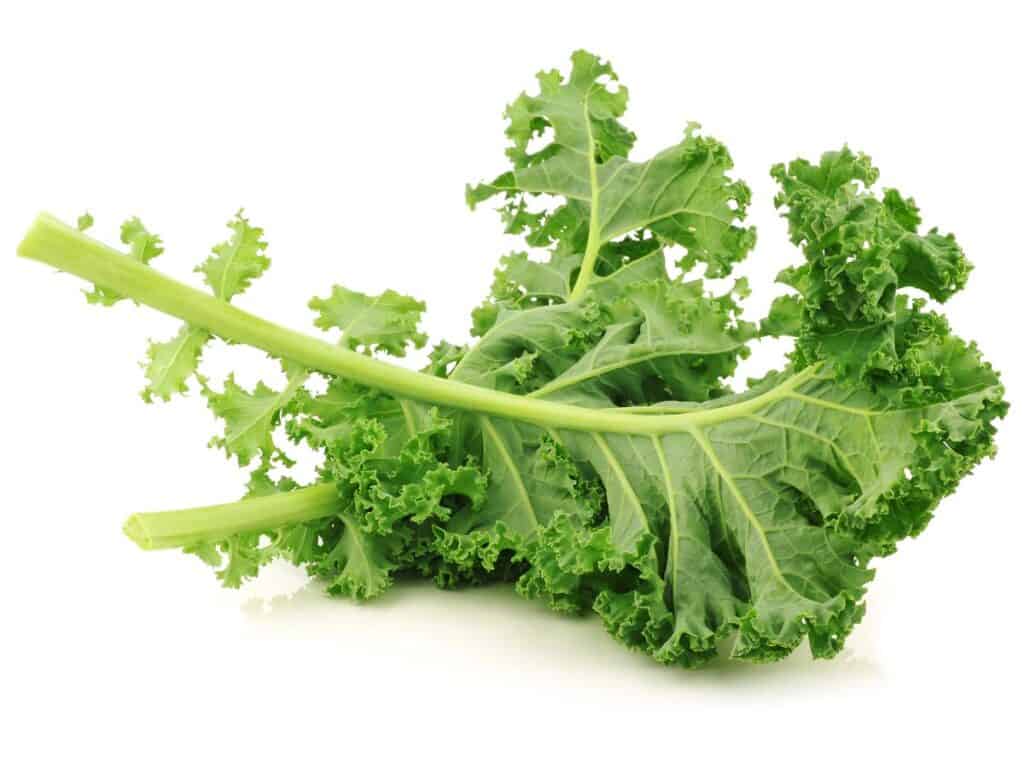
Kale
Kale can have purple or green leaves and is a member of the cabbage family. Kale is an excellent source of vitamin K, vitamin A, vitamin C, and vitamin B6.
Buying
Kale should be dark green in color with small to medium-sized leaves.
Storing
Store kale in a plastic bag in the refrigerator for up to five days.
Preparing
Wash kale and remove the stalk and central vein by hand or with a knife. Chop or tear leaves into bite-sized pieces.
Recipes
Kale Apple Salad with Honey Dressing
Kale and Mushroom Pasta with Ginger - Vegan on Board
Crispy Baked Kale Chips - The Soccer Mom Blog
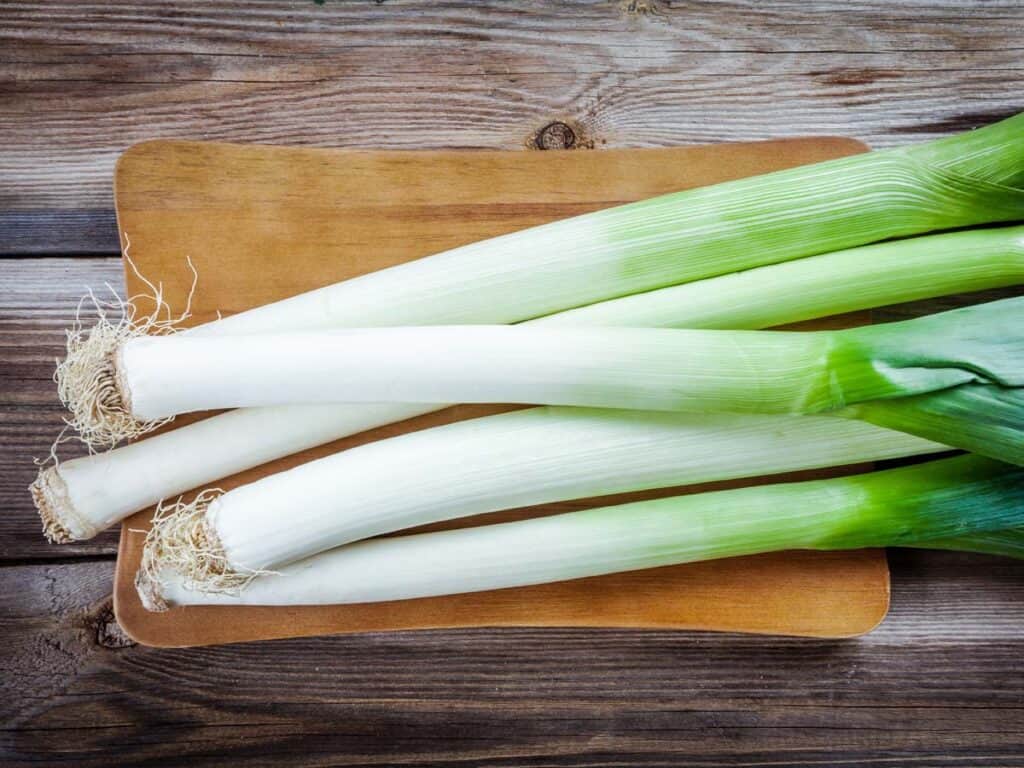
Leeks
Leeks have a mild onion-like flavor. Leeks are a good source of fiber, vitamin B6, iron, and magnesium. They are also a very good source of folate as well as vitamins A, C, and K.
Buying
Look for leeks that are firm and have as much white and light green parts as possible.
Storing
Leeks can be refrigerated for up to two weeks.
Preparing
The dark green leaves are usually tough. Most dishes use just the white and light green portions. Leeks grow in sandy soil and need to be washed thoroughly. Cut off the root and then slice the leek in half vertically. Chop and place in a bowl of cold water. Agitate the leeks well, then drain and use.
Recipes
Mushroom, Leek, and Goat Cheese Tart - Barth Bakery
Ham and Leek Pie
Ham, Leek, and Hash Brown Muffins
Leek Potato Soup

Lemons
Lemons have a distinctive sour flavor and a variety of culinary uses. Lemon juice, rind, and peel are used in a wide variety of foods and drinks. Lemon juice also helps to prevent certain foods, such as apples, bananas, and avocados, from turning brown after being sliced.
Buying
Look for lemons that are heavy for their size, firm, and have smooth thin skin. Medium to large-sized lemons are usually juicier than smaller lemons. Avoid lemons that are soft, spongy, wrinkled, and have bumpy skin.
Storing
Lemons can be stored at room temperature for up to 1 week, or in the refrigerator 2-3 weeks.
Preparing
Wash lemons before cutting. The zest (the yellow outer skin) is edible and packs tons of flavor. Remove it with a grater or peeler, taking care not to cut the bitter inner white skin, called the pith.
Recipes
Blueberry Lemon Muffins
Lemon Thyme Cheesecake
Lemon Chicken, Zucchini, and Tomato Sheet Pan Meal - Raspberries and Kohlrabi
Tangy Lemon Miso Chicken Noodle Bowl - In the Kids Kitchen
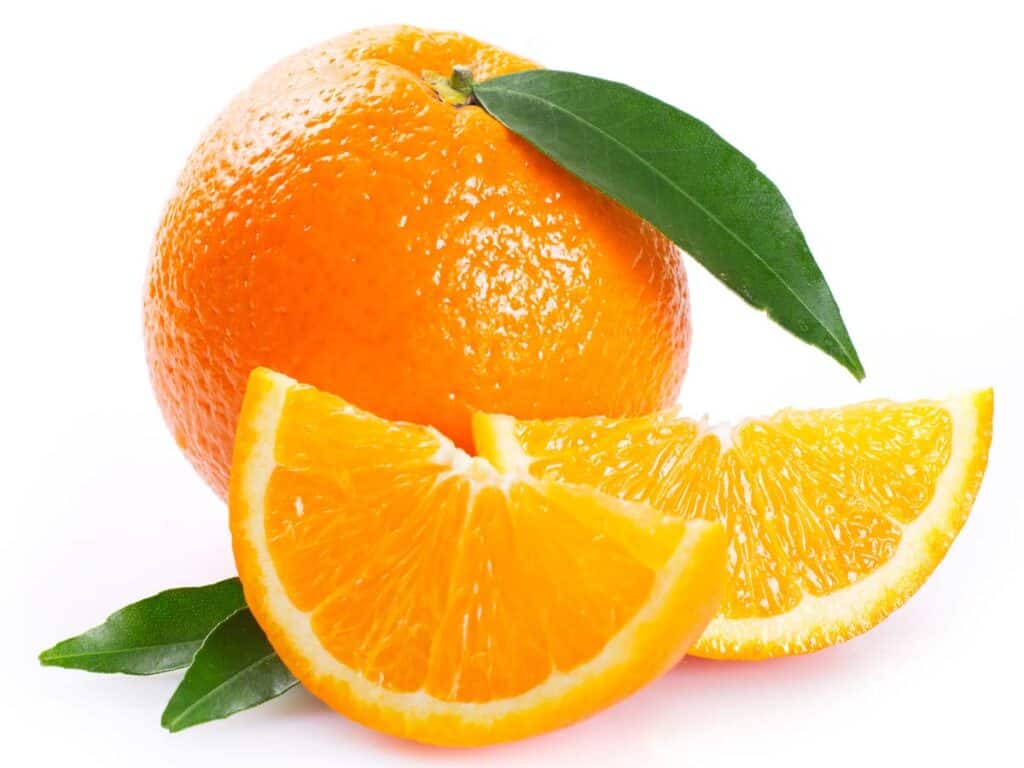
Oranges
Oranges can be eaten fresh or processed for their juice or peel. Oranges are a great source of vitamin C.
Buying
Oranges should be firm and heavy for their size. They should also have smooth bright-colored skin. Avoid oranges with blemished and wrinkled skin.
Storing
Oranges can be stored at room temperature for up to five days or refrigerated for up to two weeks.
Preparing
Oranges can be peeled and sectioned by hand. Using a knife you can also prepare skinless orange segments. With a sharp knife, cut off the top and the bottom of the orange and cut away the remaining peel and white pith. Next, either slice the fruit or cut along either side of each segment to release it. If you need the zest, grate it before peeling the fruit.
Recipes
Fruit Tart Recipe with Oranges - Housewives of Frederick County
Blood Orange Cupcakes - Tikkido
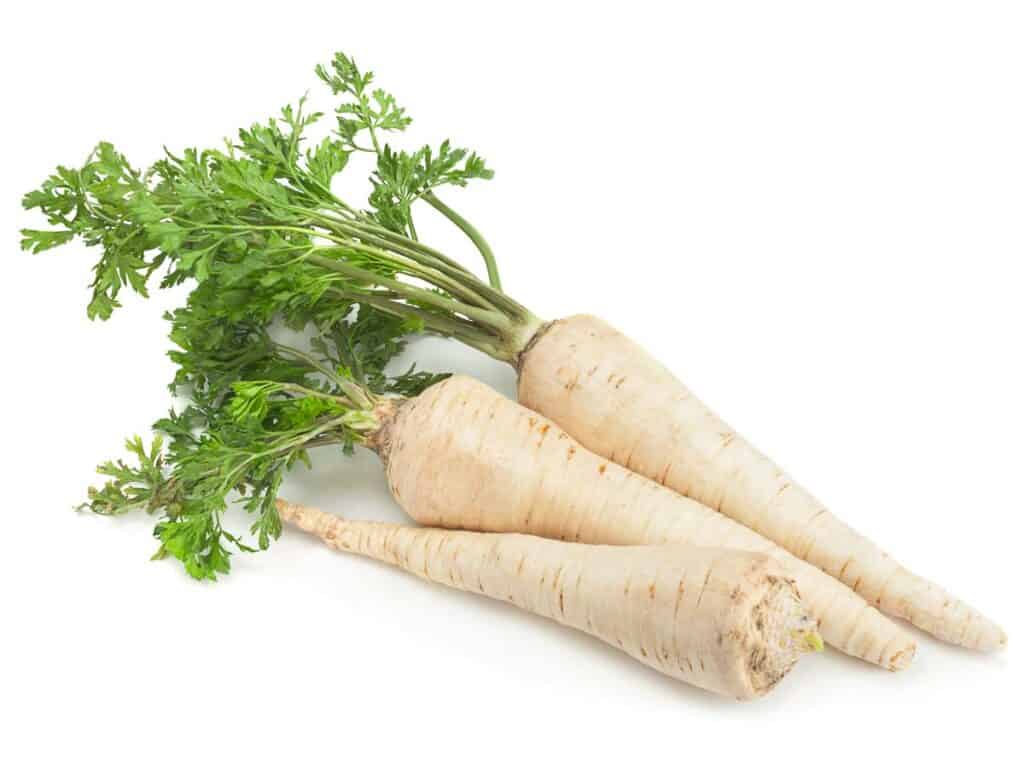
Parsnips
Parsnips are a root vegetable closely related to the carrot. Parsnips are high in potassium and fiber.
Buying
Choose parsnips that are firm and smooth. Smaller parsnips may be more flavorful and tender.
Storing
Parsnips can be refrigerated for up to two weeks.
Preparing
Wash parsnips in cold water and cut off both ends. Trim any major rootlets or knobs before cooking. Parsnips can be cooked into savory stews, boiled, mashed, or roasted.
Recipes
Loaded Roasted Parsnip Fries - Cook at Home Mom
White Bean and Parsnip Soup - Hunger Thirst Play

Rutabaga
The rutabaga is a root vegetable that is a cross between the cabbage and the turnip. It has a slightly spicier flavor than the turnip. Rutabagas can reach three to five pounds in weight. Rutabagas contain a small amount of vitamins A and C.
Buying
Rutabagas should be smooth, firm, without blemishes, and heavy for their size. Avoid large roots, they tend to be more fibrous. If you smell a rutabaga, the more pronounced the odor, the more pungent the flavor.
Storing
Rutabagas can be stored unwashed in a plastic bag in the refrigerator for up to 2 weeks. The leaves should be removed to prevent the root from drying out.
Preparing
Scrub rutabagas under cold running water before using. Cut into pieces and remove the core if it is brownish. Rutabagas can be boiled, steamed, mashed, roasted, baked, and fried.
Recipes
Roasted Swede Soup (Rutabaga Soup) - Little Sunny Kitchen
Roasted Rutabaga Fries - Savor and Savvy
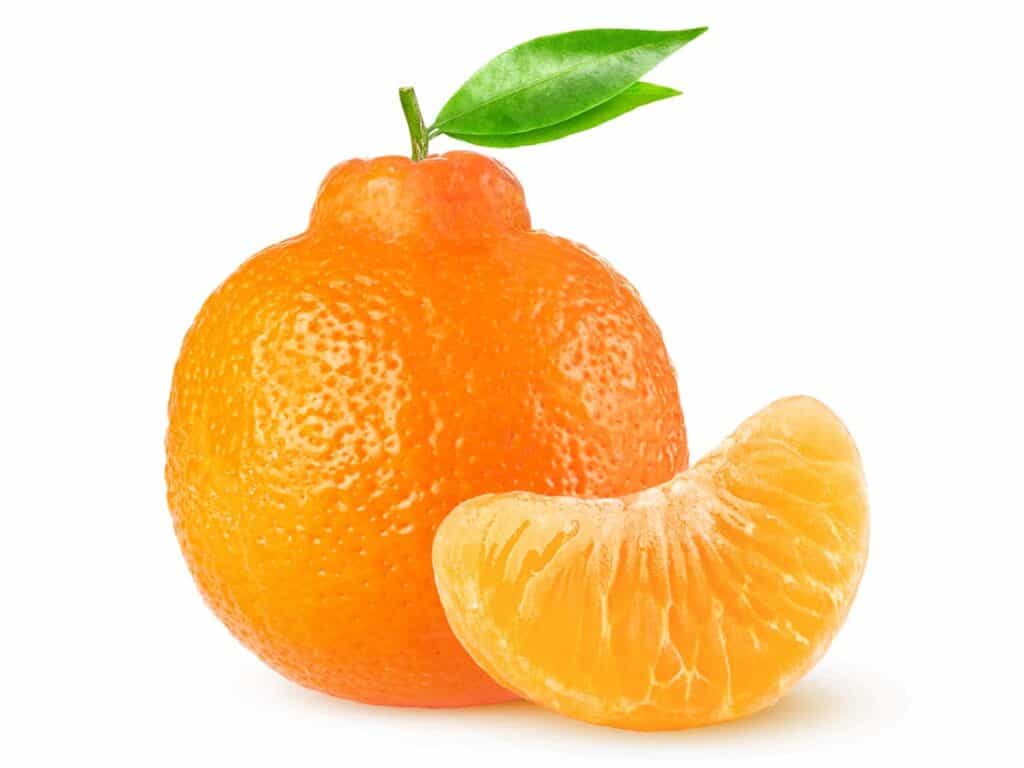
Tangelos
Tangelos can be eaten fresh or processed for their juice or peel. Tangelos are a great source of vitamin C.
Buying
Tangelos should be firm and heavy for their size. They should also have smooth bright-colored skin. Avoid tangelos with blemished and wrinkled skin.
Storing
Tangelos can be stored at room temperature for up to five days or refrigerated for up to two weeks.
Preparing
Tangelos can be peeled and sectioned by hand. Using a knife you can also prepare skinless tangelo segments. With a sharp knife, cut off the top and the bottom of the tangelo and cut away the remaining peel and white pith. Next, either slice the fruit or cut along either side of each segment to release it. If you need the zest, grate it before peeling the fruit.
Recipes
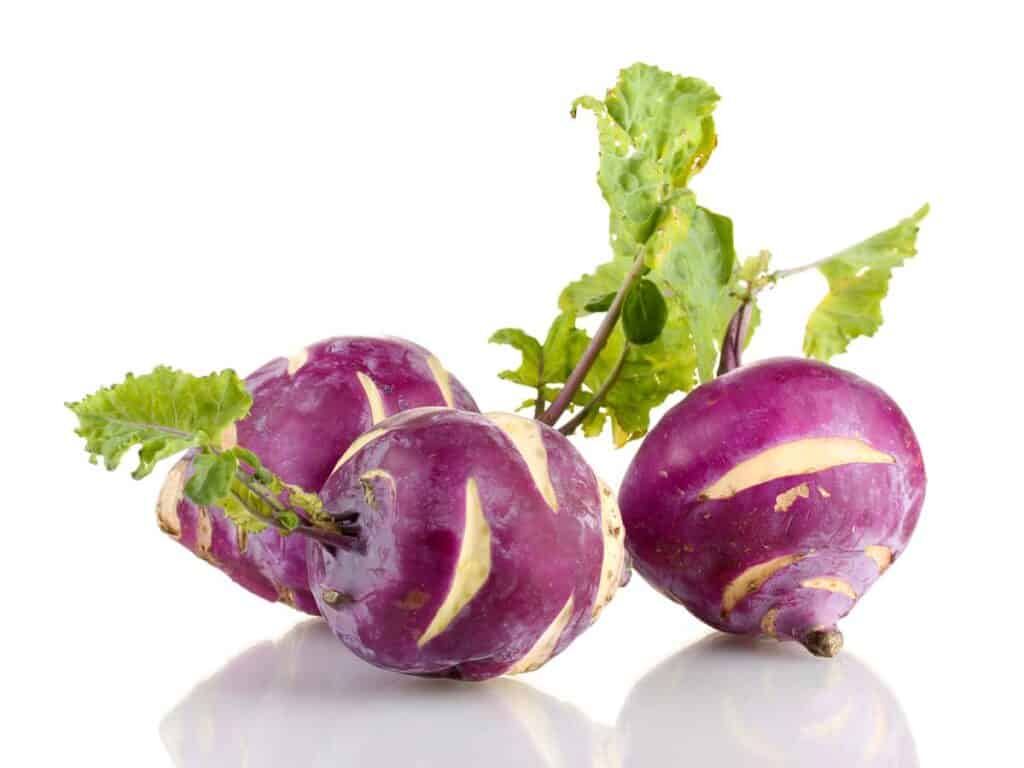
Turnips
Both the turnip root and turnip greens are edible.
Buying
Look for turnips that are heavy for their size and still have their leaves attached. Small to medium-sized turnips tend to be sweeter.
Storing
The longer a turnip is stored the more bitter it becomes. Turnips can be refrigerated for up to three days.
Preparing
Before cooking turnips, wash and peel the skin with a vegetable peeler. Next, trim off the roots and greens.
Recipes
Roasted Turnip Stacks - Divalicious Recipes
Turnip Carrot Cakes with Garlic Aioli - Fork in the Road
Read More: Seasonal Produce Guides
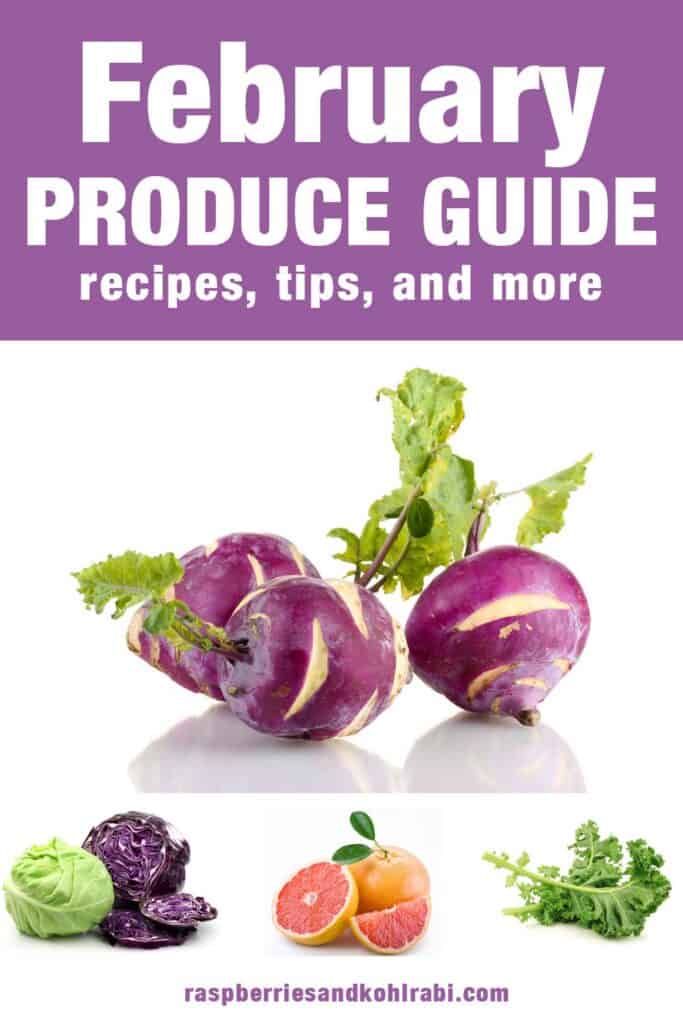


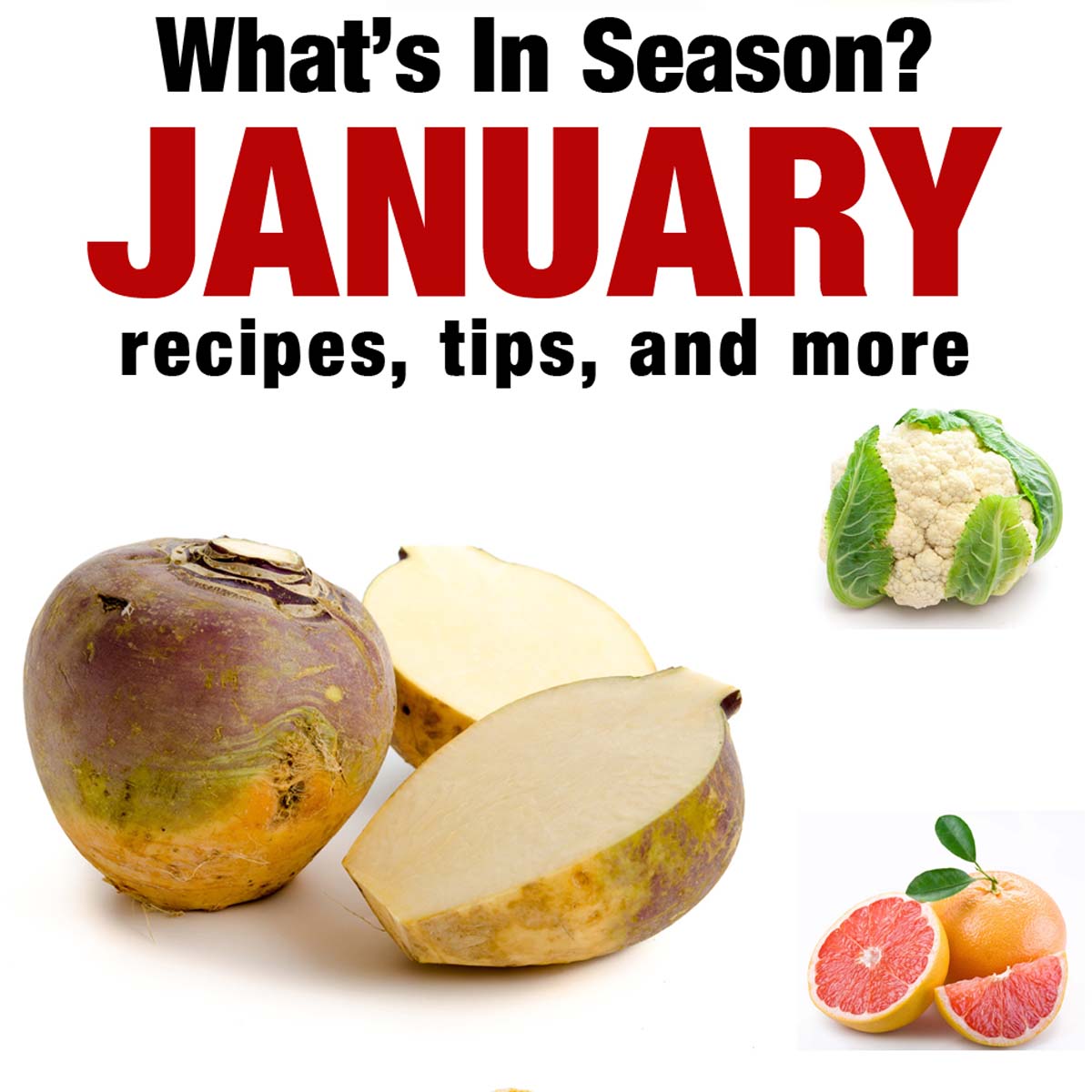
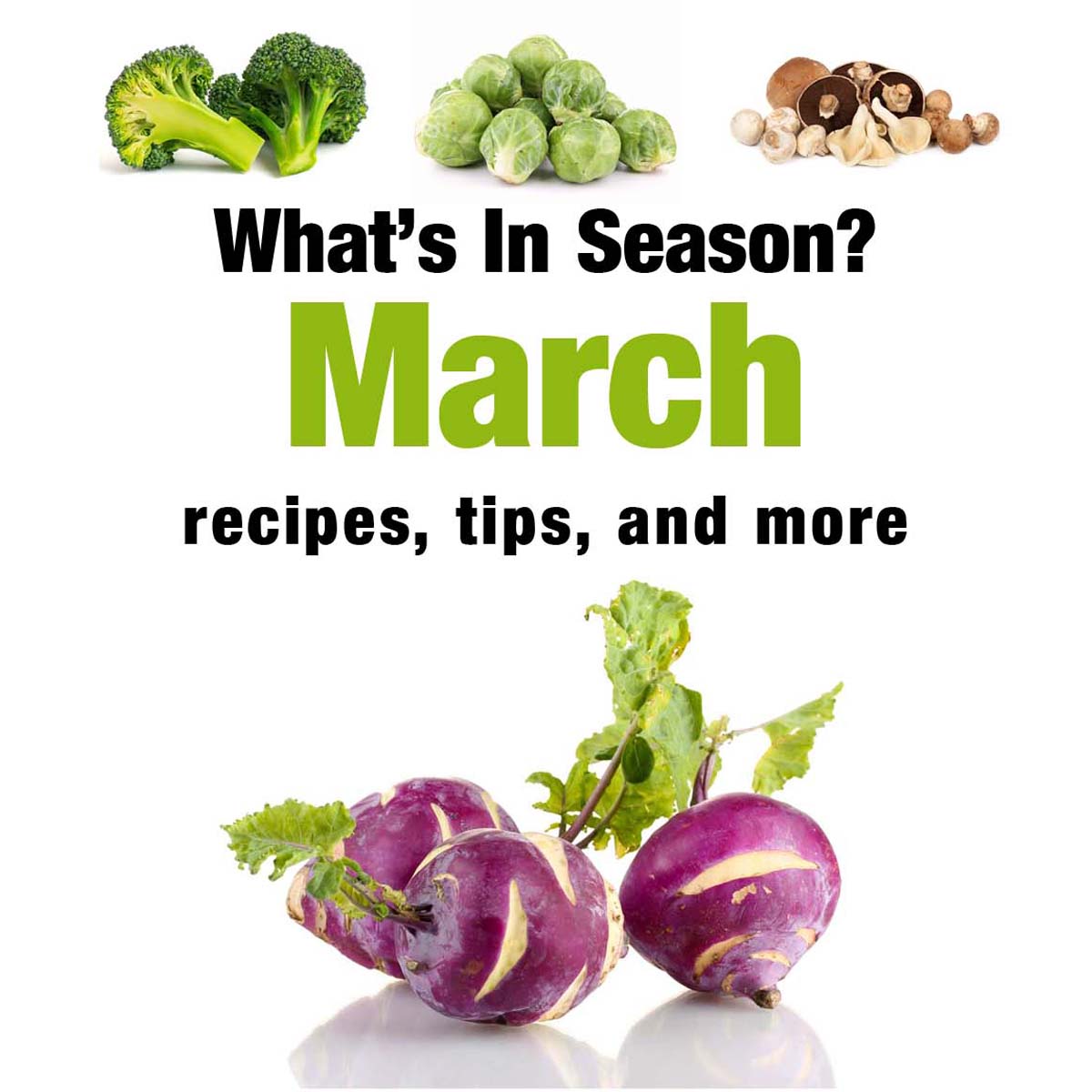

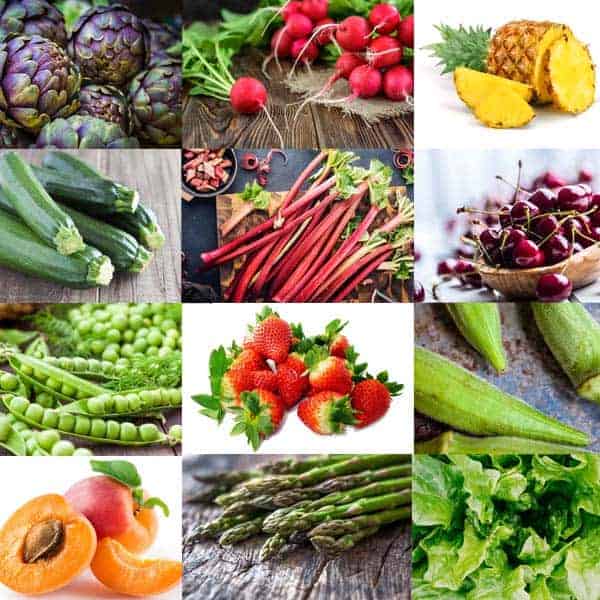
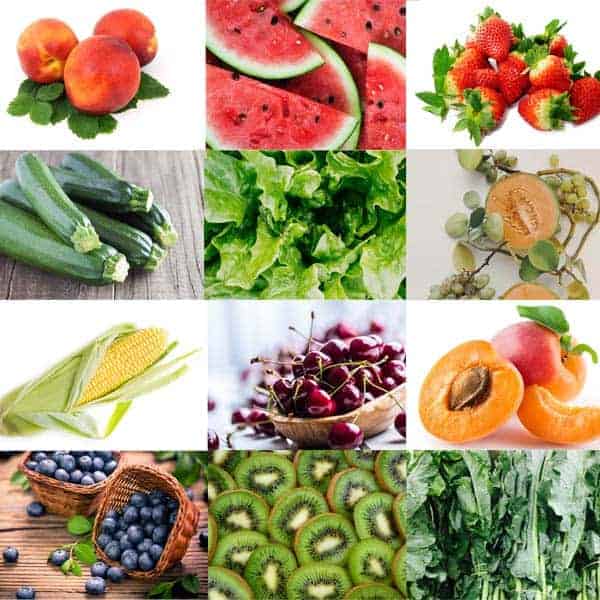
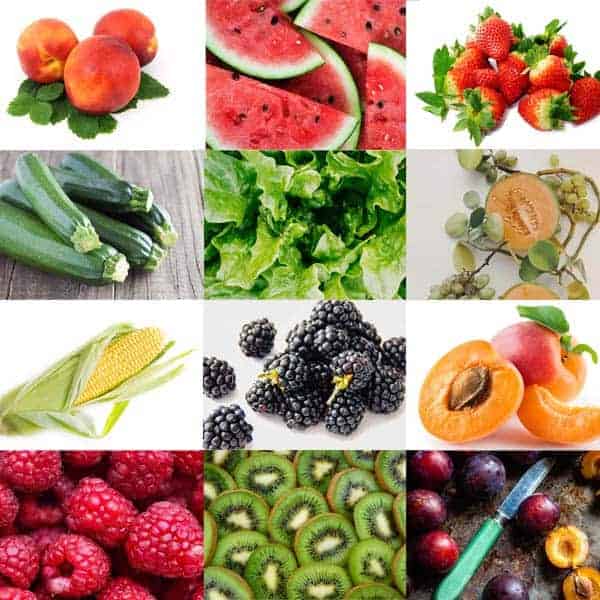
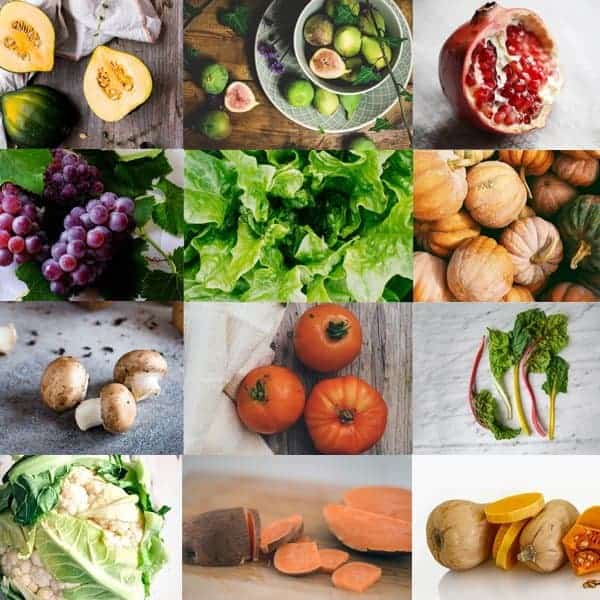
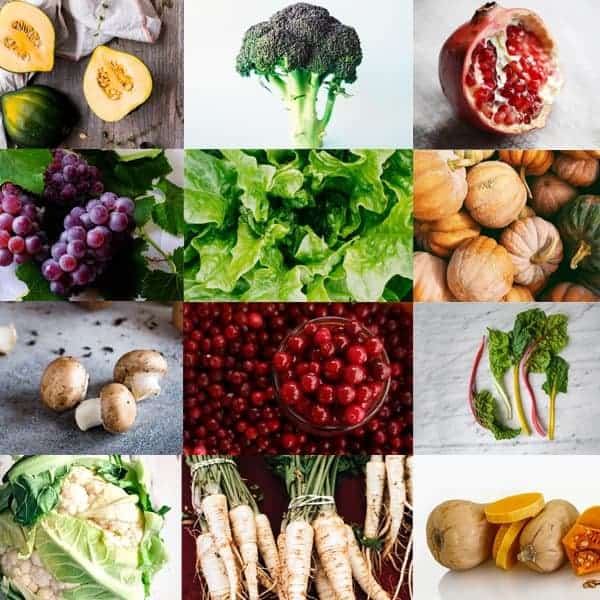

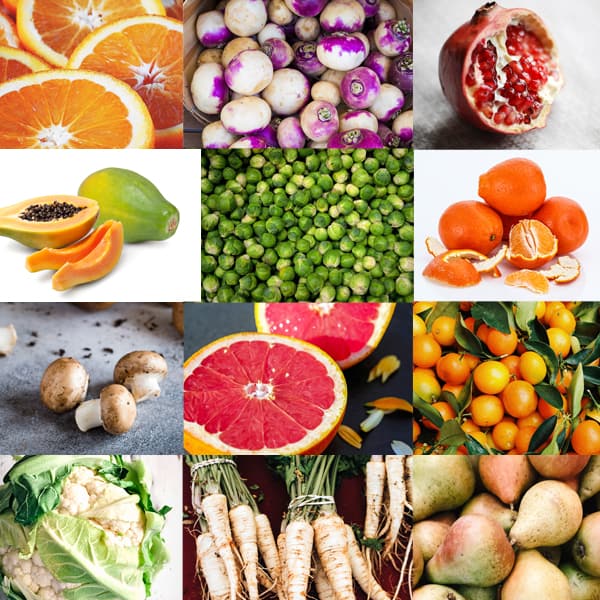
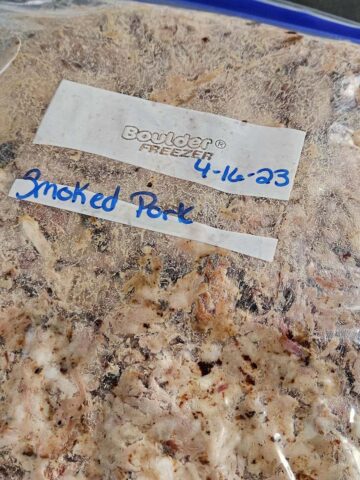
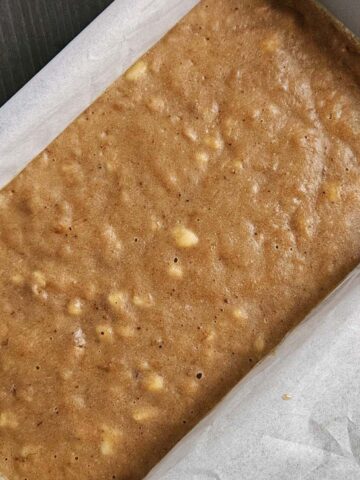
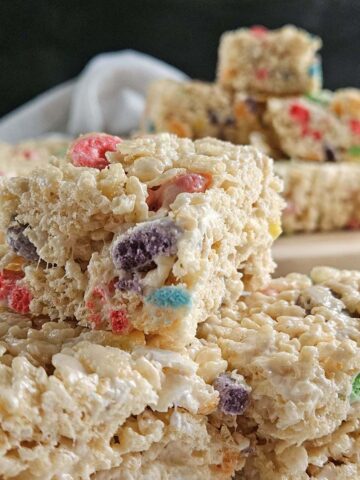
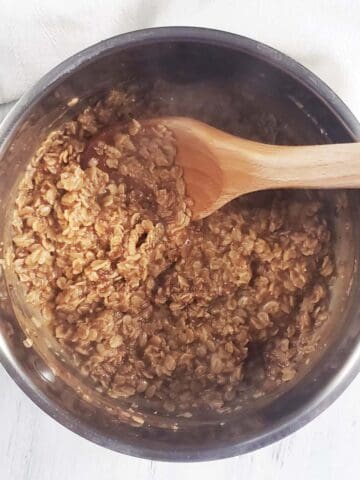
Ginnylacey says
Great blog! One of my favorite cookbooks is The Seasonal Kitchen. So nice to have seasonal recipes. Thank you!
Erica says
Thank you! I will have to check that cookbook out.
Pamela says
The dietitian in me loves this kind of information! Great job!
Erica @ Raspberries and Kohlrabi says
Thank you so much for stopping by!